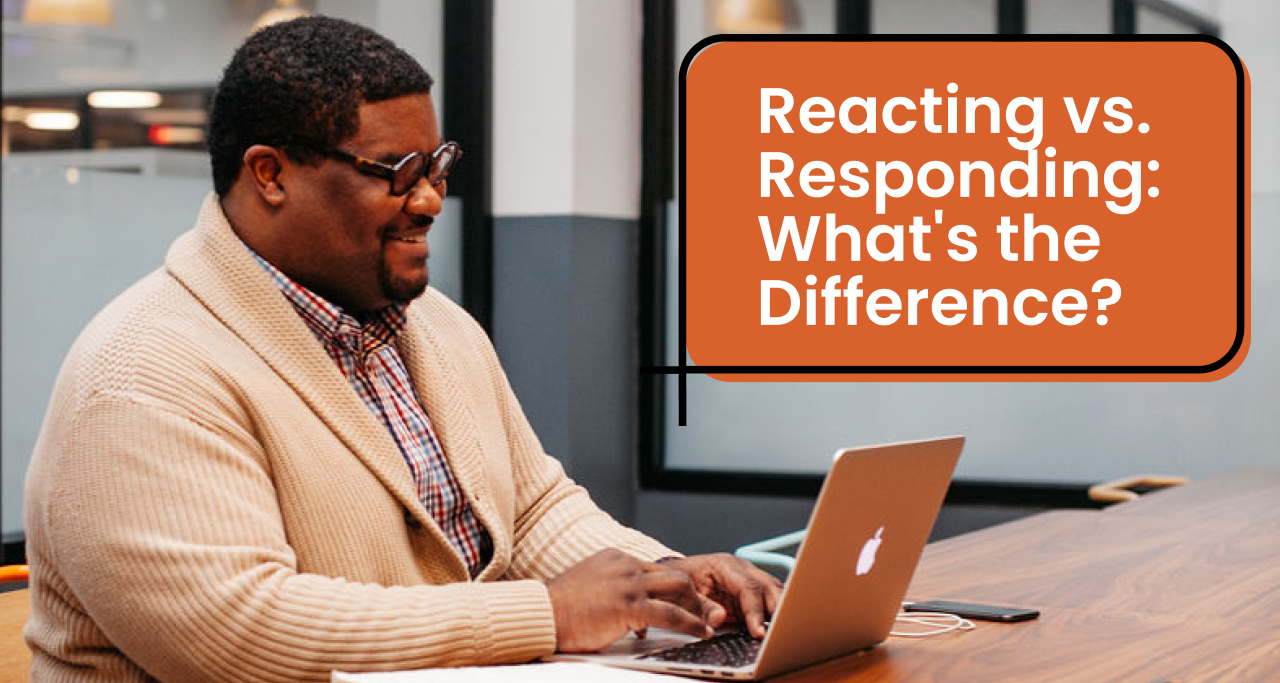Hey product folks!
Let’s dive into something often unsaid in product management: the difference between reacting and responding.

Thanks for reading The Adam Thomas Product Newsletter! Subscribe for free to receive new posts and support my work.
Why does this matter?
A product manager’s value shows in their ability to guide a team toward better decisions. Responding thoughtfully gives you a long-term advantage by focusing on strategy, rather than quick, emotional reactions.
Think of it like driving: reacting is slamming on the brakes when something jumps out at you, while responding is slowing down, having seen it coming. Which one leads to smoother journeys?
Now, reacting is a part of the job—no doubt. This isn’t a newsletter telling you otherwise.
BUT…
I want to encourage you to take a breath and choose to respond when possible.
Let’s start by defining both.
Reacting vs. Responding: What’s the Difference?
Reacting is often instinctual and driven by emotion. It happens quickly, and while it may feel good at the moment, it can lead to short-term fixes that don’t solve the deeper problem. On the other hand, responding is about being thoughtful, taking a step back, and considering the long-term impact of your actions.
Responding allows you to see the big picture and helps you weave together a narrative that aligns with your product’s vision.
The benefits of responding are clear: it allows for time to weigh the pros and cons, to think through second- and third-order effects, and to create a narrative that not only solves the problem but also communicates a solution clearly to your team and stakeholders.
A well-thought-out response can build trust and drive smarter decisions.
Transforming a Reaction into a Response
Let’s walk through a common product management scenario:
Scenario: A critical bug is reported hours before a product launch.
Reacting: You immediately halt the release, send urgent emails to the engineering team, and scramble to fix the issue without fully assessing the situation. This decision causes delays and frustration, but the bug is fixed.
Responding: You pause, gather more context, and assess the severity of the bug. You consider whether the issue affects all users or just a subset, and what the consequences are for delaying the launch versus pushing it live with the bug and addressing it in the next update.
After gathering input, you make an informed decision that takes both the immediate and long-term consequences into account.
Transforming a reaction into a response requires slowing down, gathering data, and making decisions based on information, not instinct.
Ask yourself - what's the consequence of taking a breath? If you can gather yourself and get a little more context, that shift from reacting to responding can keep your car (in this case, your product team) running smoothly.
Questions to Ask Yourself: Reacting or Responding?
When faced with a decision, ask yourself these questions to move from reacting to responding:
• Am I thinking long-term?
If your focus is on the immediate impact without considering future outcomes, you may be reacting.
• What narrative am I creating for my team or stakeholders?
Responding allows you to tell a cohesive story that aligns with your product goals and team’s vision.
• Am I addressing the root cause or just the symptom?
Reacting often leads to treating symptoms. Responding requires a deeper look at what’s really going on.
By asking these questions, you can make sure you are steering your team toward proactive, thoughtful decisions that build trust and consistency. It’s not about avoiding reacting entirely, but about knowing when and how to respond to create long-term success.
Conclusion
The difference between reacting and responding can be the difference between putting out fires and building a sustainable product strategy. By being mindful of your decision-making process and learning to slow down, gather context, and tell a story, you’ll create better outcomes for your team and your product.
So the next time something happens, take a breath—respond, don’t react.

Link to my Office hours
Thanks for reading The Adam Thomas Product Newsletter! Subscribe for free to receive new posts and support my work.


